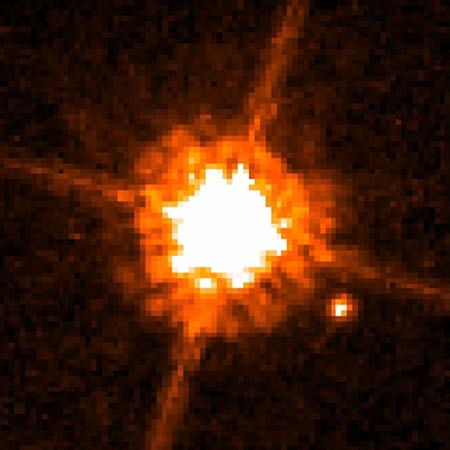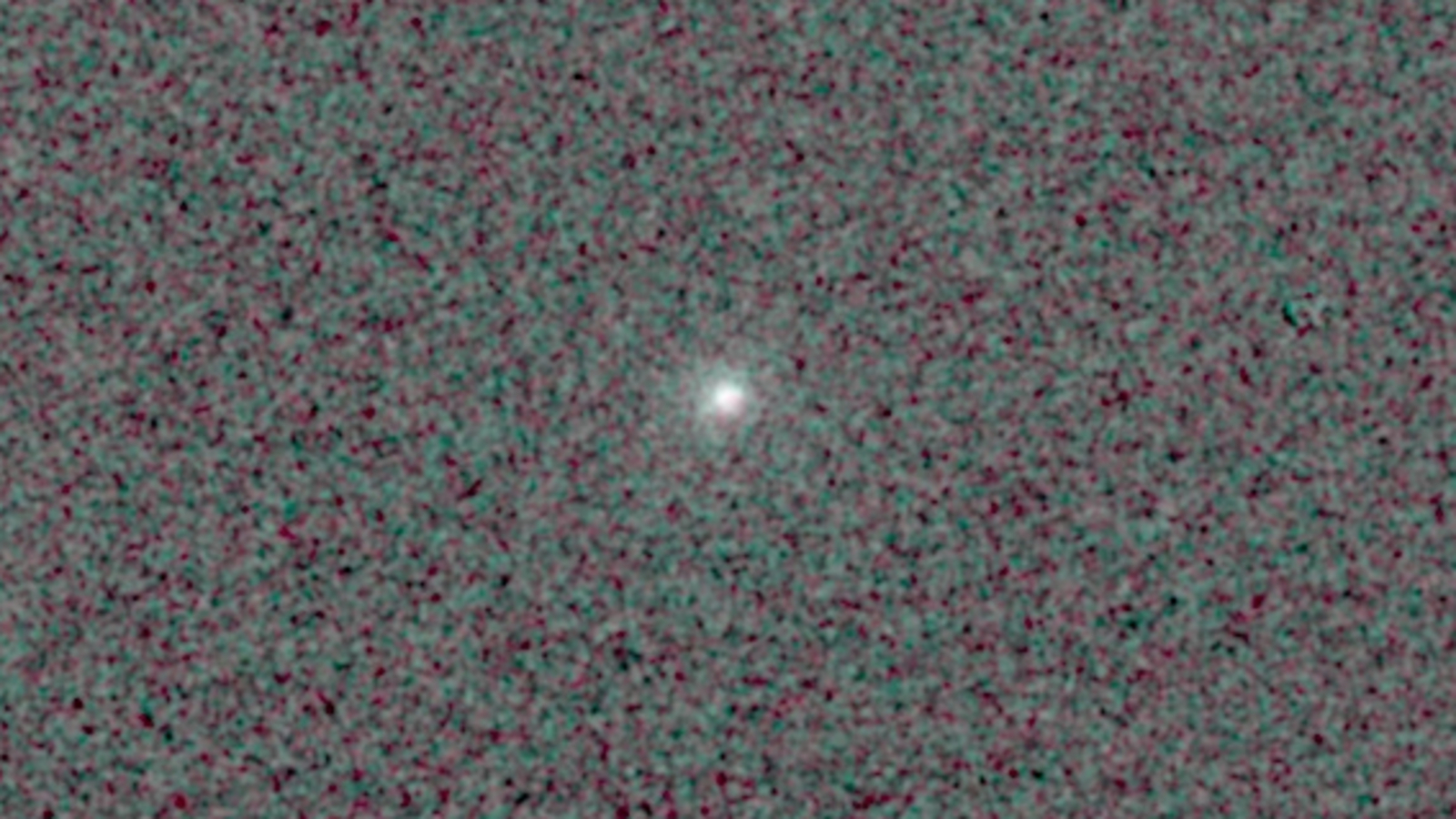
The HubbleSpace Telescope has spied one of the smallest objects ever detected around anormal star. The object further blurs the line between stars and planets and raises new questions abouthow planets should be defined outside our solar system.
Announcementof the discovery comes two weeks after the International Astronomical Union(IAU) approved the first official definition of "planet" for oursolar system and downgradedPluto to dwarfplanet status.
The newlyspotted object is a companion to CHXR73, a low-mass reddwarf star located 500 light-years from Earth, and is itself called CHXR73 B.
With 12times the mass of Jupiter, CHXR 73B straddles the line between the largest planets and the smallest stars. Thelatter, called browndwarfs or "failedstars," don't have enough mass to sustain the types of thermonuclearreactions that keep larger stars alight for billions of years.
The findingwill be detailed in the Sept. 20 issue of AstrophysicalJournal.
Formation history
Breaking space news, the latest updates on rocket launches, skywatching events and more!
CHXR 73 Bis located about 19.5 billion miles (31.3 billion km) from its parent star, orroughly 200 times farther than Earth is from our Sun. This distance is so great that eventhough CHXR 73 B has about the right mass to be a planet, it likely didn't formin the same way that planets in our solar system did, scientists say.
Accordingto standard planetformation theories, planets are created from the disks of gas and dustsurrounding newbornstars. But the circumstellar disks of red dwarfstars are typically no more than 10 billion miles (16 billion km) in diameter.Furthermore, theory predicts that gas-giant planets like Jupiter should form nomore than about 3 billion miles (4.8 billion km) from their stars. CHXR 73 B islocated far beyond both these limits.
"Thisobject is too far from the star to have formed within a disk of gas anddust," said Kevin Luhman of Pennsylvania State University, leader of the international teamthat discovered CHXR 73 B.
Morelikely, scientists say, CHXR 73 B formed in the manner of stars: from thegravitational collapse of large, diffuse clouds of hydrogen gas.
For thisreason, Luhman believes CHXR 73 B should be regardedas a brown dwarf. Luhman believes an extrasolarobject's formation history is more important than mass when determining whetherit is a planet or not.
Planet or Star?
In a twistthat surprised many astronomers, the definition of planet recently adopted bythe IAU is not meant to apply to objects around other stars. Also, it does nottake formation history into account. According to the newdefinition, an object is a planet if it is round, orbits a star but doesnot orbit a planet, and clears a path around its star.
CHXR 73 B"certainly fulfills all three of those criteria, but the IAU definitionwas never meant to be applied to other solar systems," Luhmantold SPACE.com. "It was just forour solar system."
The newdiscovery is a reminder that objects in nature do not always fit into the neatcategories created by scientists. Recently, astronomers spied even strangerplanetary-mass objects that drift freely through space, far away from any star.Some scientists are calling the bizarre objects "planemos,"but Luhman says the name is unnecessary and that theobjects are really just brown dwarfs.
Next step
Scientistssay the question of whether or not CHXR 73 B is a planet could be settled whenthe JamesWebb Space Telescope launches, sometime around 2013. The high resolutionWebb telescope would be sharp enough to determine if, like some other browndwarfs, CHXR 73 B has a circumstellar disk of itsown.
"If itdoes, it's clearly an object that did not form in a disk around the star,because it wouldn't have a disk by itself then," Luhmansaid.
He addedthat if CHXR 73 B does have a disk, it would be some 5 AU in diameter, muchwider than the debris rings found around gas giant planets like Saturn and Jupiter. One AU is equal tothe distance between Earth and the Sun.
Ker Than is a science writer and children's book author who joined Space.com as a Staff Writer from 2005 to 2007. Ker covered astronomy and human spaceflight while at Space.com, including space shuttle launches, and has authored three science books for kids about earthquakes, stars and black holes. Ker's work has also appeared in National Geographic, Nature News, New Scientist and Sky & Telescope, among others. He earned a bachelor's degree in biology from UC Irvine and a master's degree in science journalism from New York University. Ker is currently the Director of Science Communications at Stanford University.
